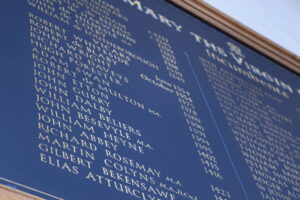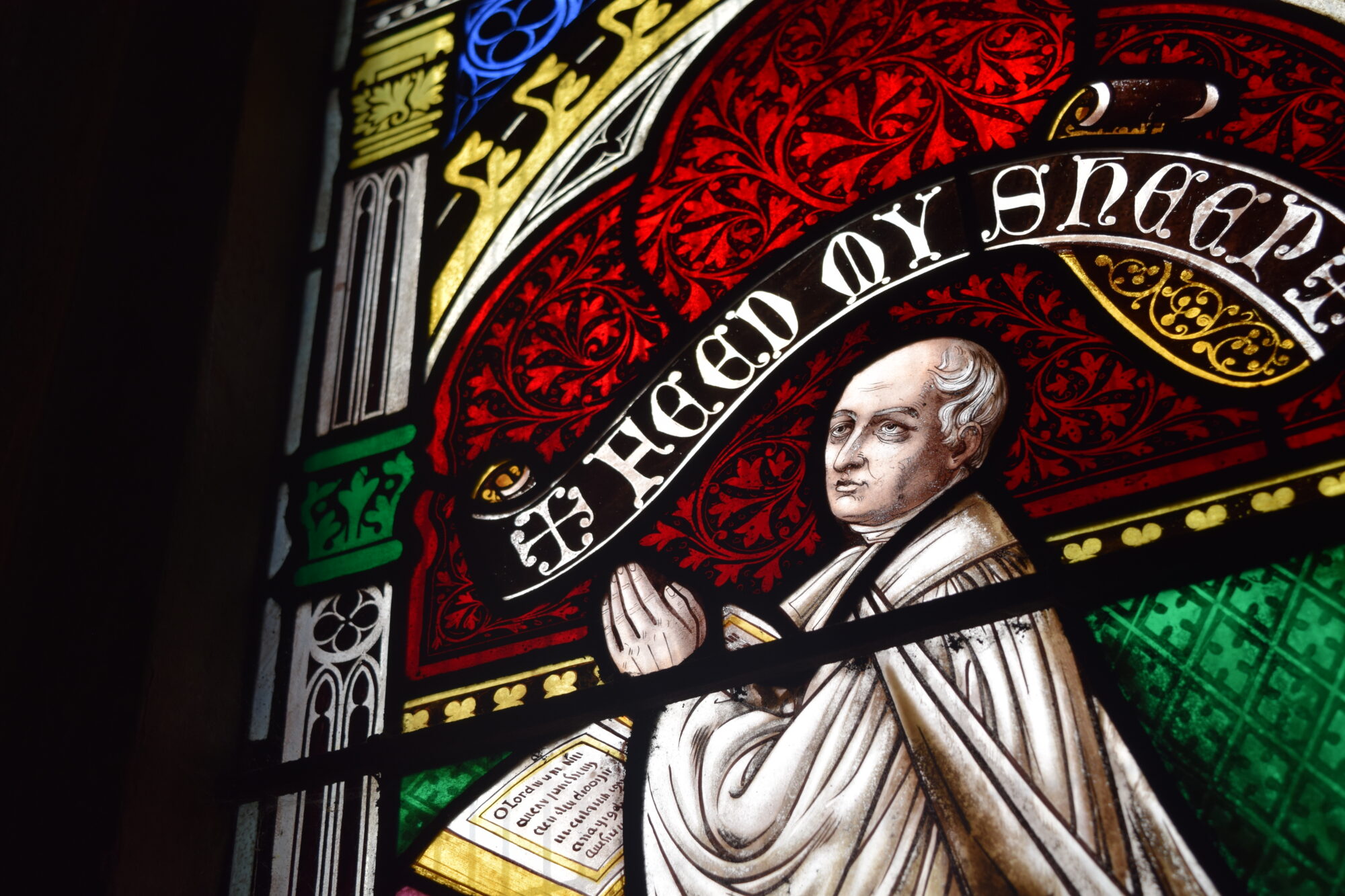St Mary the Virgin, Finedon is part of the Church of England. We fall under the Diocese of Peterborough and the Higham Deanery.
Our magnificent church, constructed in the decorated style, dates from around the year 1350 and was originally owned by Croxton Abbey in Leicestershire. The font, however, dates from c1100 which suggests an earlier Norman church stood on this spot or, that it was made for an existing Saxon church, which is feasible because Finedon was an important Saxon meeting place. It seems more than likely that the present building was constructed by the monks of Croxton Abbey and its size indicates Finedon’s importance at the time. In 1291 Finedon, Higham Ferrers and Raunds were the wealthiest benefices in the county of Northamptonshire.
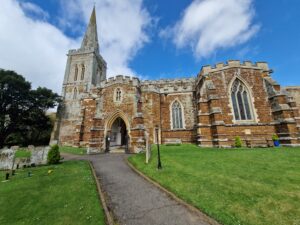

The size of St. Mary’s is breathtaking for a parish church in a small village of no more than a few hundred inhabitants at the time it was built. The chancel is 51 ft. by 21 ft., the north and south transept chapels are 31 ft. by 16 ft. The clerestoried nave of four bays is 80 ft. by 20 ft. 6 in. and the north and south aisles are about 14 ft. 6 in. wide. The south porch, and west tower are 14 ft. 10 in. by 13 ft. 6 in. All these measurements are internal. The strainer arch built across the nave to resist inward lateral pressure of the aisle arches dates from around 1400. Similar strainer arches can be found at Rushden and Easton Maudit.
Above the porch is a small room known as the ‘Monks Cell’ which contains the parish archives and a theological library of nearly 900 books, donated by Sir John English Dolben in 1788. The original stairway from the south aisle is blocked, access to the chamber being by an external stair turret added in 1794. Another external stair turret can be found on the north side of the church at the junction of the nave and chancel. This originally led to a rood loft and to the roof.
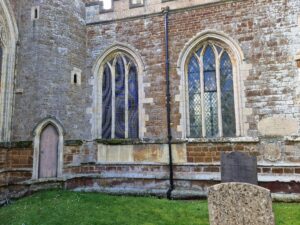
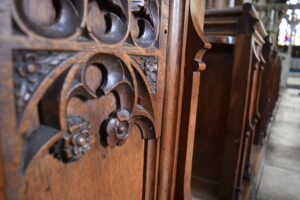
Although there are a few surviving medieval pews at the rear of the nave the rest were installed in 1858 during a general restoration. The chancel screen also dates from this time, the original, it is believed, was destroyed by Cromwell’s men. During this restoration the font was rescued from nearby field, where it had served as a cattle trough. The carvings on the font had been severely damaged, probably at the time of the Commonwealth and subsequently surrounded by painted woodwork to cover the mutilation. For some reason it was removed in 1837 and a new font installed. But its use as a cattle trough was short lived and 21 years later it was back in its original position.
The tower and spire were built about fifty years after the main church building. It contains a peal of 8 bells, a full octave in the key of D. The oldest bell dates from 1639 and has the inscription:
AS IN ADAM ALL DIE, SO IN CHRIST SHALL ALL BE MADE ALIVE.
The original clock (dated 1733) struck only the time and had no dial. The present clock mechanism dates from 1876. The tower and spire rise to 133 feet above the ground. The steeple was struck by lightning in 1897 and had to be rebuilt.
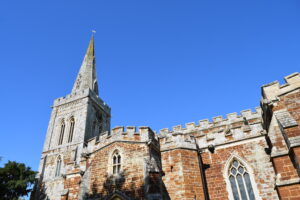
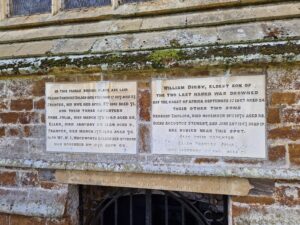
The Dolben vault is situated at the east end beneath the high altar. The only entrance is from the outside and a ladder is required to descend. It is protected by iron railings and locked gates. It was constructed to contain the remains of the Dolben family in c1710.
Throughout its history 8 Rectors and 53 Vicars have served as incumbent, in 2024 our 54th incumbent Vicar was welcomed to our parish. Our longest serving Incumbent was Revd George Paul, installed in 1848 and served our parish for over 60 years.
Throughout our church building can be found paintings of former incumbents which are held by the Vernon Trust.
